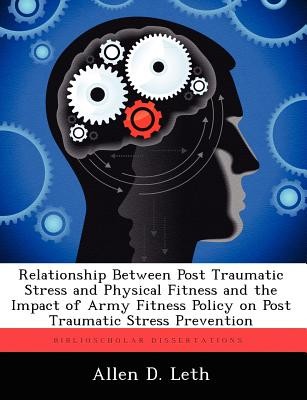
- We will send in 10–14 business days.
- Author: Allen D Leth
- Publisher: BiblioScholar
- ISBN-10: 1249285550
- ISBN-13: 9781249285557
- Format: 18.9 x 24.6 x 0.4 cm, softcover
- Language: English
- SAVE -10% with code: EXTRA
Relationship Between Post Traumatic Stress and Physical Fitness and the Impact of Army Fitness Policy on Post Traumatic Stress Prevention (e-book) (used book) | bookbook.eu
Reviews
Description
Increases in operation tempo since September 11, 2001 have resulted in elevated rates of post traumatic stress (PTS) and reduced levels of physical fitness across the U.S. Army. This thesis sought to identify a relationship between the elevated PTS and decreased physical fitness as well as determine methods to invert both levels experienced by deployed Soldiers. Soldiers experience PTS symptoms when stress levels are not adequately managed resulting in anxiety. Physical training and exercise provide the parasympathetic response needed following stressful situations and increase Soldier resiliency through physical and mental hardiness. Soldiers located at company and battalion level operating bases are often denied the facilities, time, and training necessary to sustain the physical fitness levels developed in the garrison environment. This situation is compounded by U.S. Army policies that reduce the emphasis on physical training during and after deployments. These decisions by senior U.S. Army leadership have served to, directly or indirectly, reduce the potential for physical training and lowered fitness levels of deployed Soldiers. This thesis recommends modifications to U.S. Army policy, establishment of unit level fitness experts, and increased support to the small unit level operating bases in the form of equipment and funding.
EXTRA 10 % discount with code: EXTRA
The promotion ends in 18d.15:05:46
The discount code is valid when purchasing from 10 €. Discounts do not stack.
- Author: Allen D Leth
- Publisher: BiblioScholar
- ISBN-10: 1249285550
- ISBN-13: 9781249285557
- Format: 18.9 x 24.6 x 0.4 cm, softcover
- Language: English English
Increases in operation tempo since September 11, 2001 have resulted in elevated rates of post traumatic stress (PTS) and reduced levels of physical fitness across the U.S. Army. This thesis sought to identify a relationship between the elevated PTS and decreased physical fitness as well as determine methods to invert both levels experienced by deployed Soldiers. Soldiers experience PTS symptoms when stress levels are not adequately managed resulting in anxiety. Physical training and exercise provide the parasympathetic response needed following stressful situations and increase Soldier resiliency through physical and mental hardiness. Soldiers located at company and battalion level operating bases are often denied the facilities, time, and training necessary to sustain the physical fitness levels developed in the garrison environment. This situation is compounded by U.S. Army policies that reduce the emphasis on physical training during and after deployments. These decisions by senior U.S. Army leadership have served to, directly or indirectly, reduce the potential for physical training and lowered fitness levels of deployed Soldiers. This thesis recommends modifications to U.S. Army policy, establishment of unit level fitness experts, and increased support to the small unit level operating bases in the form of equipment and funding.


Reviews